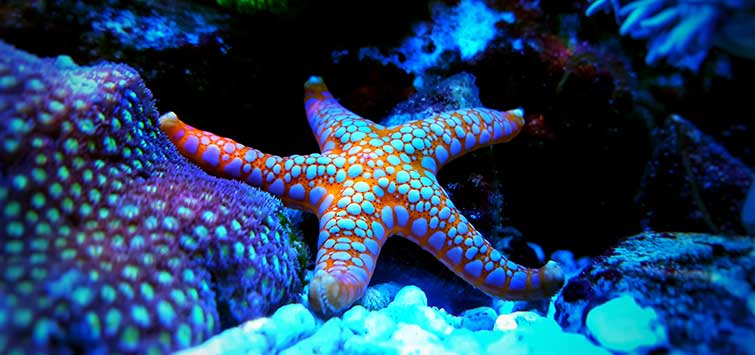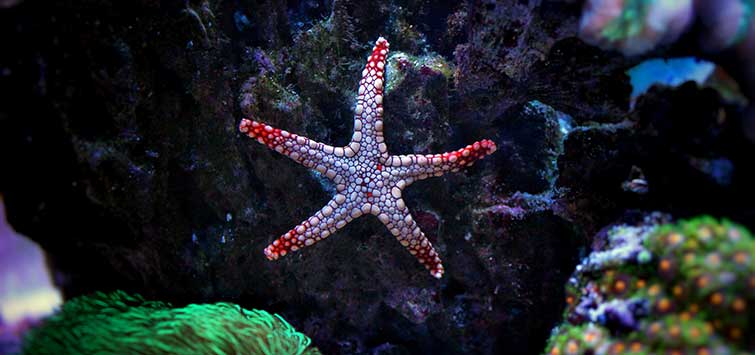Protoreaster nodosus
Author: Bob Goemans
Common Names: Chocolate chip sea star
Phylum: Echinodermata
Class: Asteroidea
Order: Valvatida
Family: Oreasteridae
Range: Indo-Pacific Ocean to Eastern Africa
Natural Environment: This species is usually found on shallow sandy and muddy bottoms, and seagrass beds in lagoon and back reef areas where it is thought to feed upon sponges and other benthic invertebrates.
Water Requirements: Calcium 380 to 430 ppm, alkalinity 3.5 meq/l, pH 8.1 to 8.2, specific gravity 1.022 to 1.026, and a temperature range of 72° to 81°F (22° to 27°C).
Captive Care
This sea star is not suited for reef aquariums, as I’ve heard of it devouring anemones, gorgonians, soft corals, sponges, clams, urchins, tubeworms, and small sleeping fish.
It is a commonly collected species, simply because it’s plentiful and easy to catch in the wild. Because of its physical shape, i.e., wide arms and thick spiny body, it is incapable of searching for food between rockwork in most aquaria. In captivity, therefore, it requires a more open environment that is easily navigated, such as what may be found in many fish-only aquariums.
Tank Size
And since its central disc area can attain a diameter of about 5 inches (12.5 cm), I would consider a 100-gallon aquarium the smallest in which it should be kept.
Feeding
Keep in mind these creatures are toothless and either swallow their prey whole, then expel the undigested parts (such as hard shells), or they extend their stomach and digest whatever they are resting upon, such as what the crown-of-thorns does to coral polyps.
As for feeding, there probably isn’t a hobbyist aquarium that can naturally provide this creature its necessary nutritional needs long term. I suggest placing different types and sizes of organic foodstuffs on the aquarium substrate just prior to the lights going out. These creatures, if healthy, are very capable of knowing when food enters the aquarium and will quickly take the shortest path to the foodstuff.
Special Care
Long-term success rate with this sea star appears to be poor, as most die of malnutrition. And keep in mind, all sea stars/starfish are very vulnerable to sudden salinity changes. Therefore, acclimate carefully before transferring new purchases to your aquarium.

.png?h=595&iar=0&w=2781&hash=5FD5E69473BCC22199FBFA2FB71B6033)



